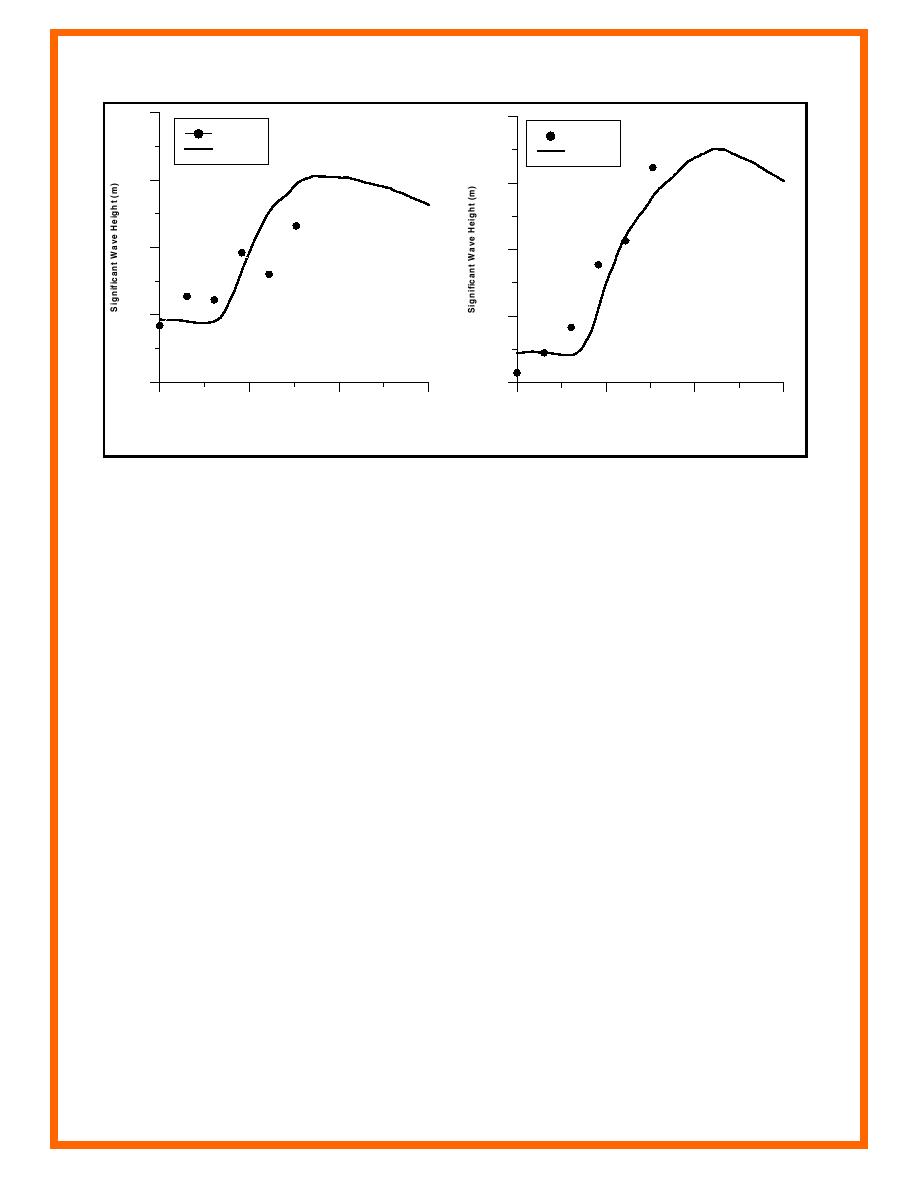
ERDC/CHL CETN-IV-25
June 2000
0.08
0.07
m e a s u re d
m e a s u re d
calculated
calculated
0.07
0.06
0.06
0.05
0.05
0.04
0.04
0.03
0
4
8
12
0
4
8
12
Cross-Shore Distance (m )
Cross-Shore Distance (m )
(a)
(b)
Figure 3. Comparison between calculated and measured significant wave height for
Smith et al. (1998) (a) Case 5 and (b) Case 11
Example 2: Wave-generated longshore current in the presence of a large-scale
current. To illustrate the capability in NMLong-CW to simulate the presence of a large-scale
current and the wave-generated longshore current in the nearshore, a hypothetical example is
discussed. An equilibrium profile shape in accordance with Dean (1977) was assumed with a
shape parameter of A = 0.1 m1/3 corresponding to a median sand grain size of about 0.2 mm. A
root-mean-square (rms) wave height in deep water of Hrmso = 2.0 m with a mean period of T
= 8.0 sec and a mean incident angle αo = 30 deg was specified (waves Rayleigh distributed in
deep water). Also, a large-scale current was specified with an alongshore component growing
exponentially from 0 at the shoreline to 0.5 m/sec in the offshore and having no component
across shore (δ = 90 deg). Standard (default) values were specified for the wave and longshore
current parameters: γb = 0.78, κ = 0.15, Γ = 0.4, Λ = 0.3, and cf = 0.003.
Figure 4 illustrates the simulated longshore current for waves and large-scale (L-S) current
together as well as for waves only. Also, the cross-shore distribution of the input L-S current is
shown in the figure. In the absence of waves, NMLong-CW exactly reproduces the input L-S
current. However, if waves are present, the bottom friction stress will increase, and the
simulated current will typically also differ from the L-S current outside the region of wave-
generated currents. Because the influence of the waves disappears in deeper water, the simulated
current will approach the input L-S current (if there is no wind-induced current).
Example 3: Wave transformation at an inlet in the presence of a flood and ebb
conditions as observed at Shinnecock Inlet, Long Island, NY. For this example, NMLong-CW is
operated to obtain information exclusively on cross-shore processes. It is cautioned that inlet
entrances are complex and that results obtained from simplified calculation conditions should be
interpreted with caution.
9


 Previous Page
Previous Page
